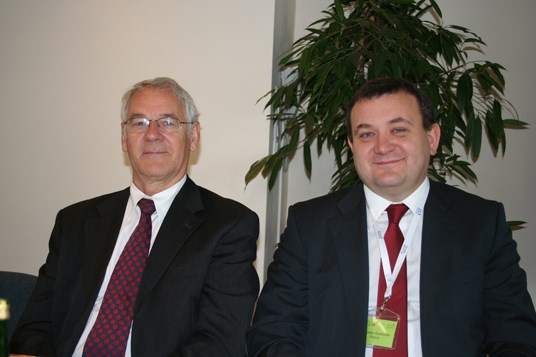EEA and Norway Grants: Environmental protection is the largest sector
Historical archive
Published under: Stoltenberg's 2nd Government
Publisher: Ministry of the Environment
News story | Date: 22/10/2009
The EEA and Norway Grants are making a difference and contributing to a better environment in the beneficiary states. About one quarter of the funding provided by Norway for the period 2004-2009 is spent on environmental projects.
The EEA and Norway Grants are making a difference and contributing to a better environment in the beneficiary states. About one quarter of the funding provided by Norway for the period 2004-2009 is spent on environmental projects.
These grants make a difference. Especially when it comes to environmental projects run by local authorities or non-governmental organizations, says Norwegian Minister of the Environment Erik Solheim
The EEA Grants and Norway Grants were established in connection with the enlargement of the EU and European Economic Area (EEA) in 2004. The overall aim is to contribute to the reduction of social disparities in the EEA. Norway, Iceland and Liechtenstein contributes 1.3 billion euro to the 15 beneficiary states. Norway, as the largest donor, provides 97 percent of the total grants. Environmental protection receives grants of approximately 283 million euro, leading to about 350 projects, programmes and funds, and thereby making environmental protection the sector receiving the most funds.
The largest part of this green funding focuses on energy efficiency and renewable energy in public buildings, in order to decrease emissions of greenhouse gases and other pollutants. Other key areas of support include reducing water pollution, improving waste management, protecting biodiversity, and environmental monitoring.

Mr. Stanisław Gawłowski, Secretary of State, Polish Ministry of the Environment (to the right) and His Excellency Enok Nygaard, Norwegian Ambassador in Poland, participated at the opening of the conference in Warszaw. Photo: Kari Ertresvåg, Financial Mechanism Office.
In addition, several research projects in the environmental field are supported.
Through 19 funds for non-governmental organizations (NGOs) in 12 beneficiary states, 1000 NGO projects are already being implemented. Many of these are in the field of biodiversity and environmental protection. Norway is a significant supporter of civil society in Central and Southern Europe.
In October 2009, more than one hundred participants from beneficiary states and donor states were gathered in Warsaw to exchange experiences and present results in the field of environmental protection and sustainable development. Results from several projects and programmes were presented at the conference, and later this year two reviews about the results related to decrease emissions of greenhouse gases and protecting biodiversity will be published.
In Poland, 300 schools, hospitals and other public buildings are being upgraded to improve their energy efficiency and introduce renewable energy sources. The energy savings in these projects are on average above 50 percent. In addition the projects results in less air pollution, better indoor climate, and creates jobs.
Results from climate change projects in Estonia, marine monitoring in Poland, protection of biodiversity in Slovakia and promotion of environmental technology in Latvia were also presented.
More information:
- EEA and Norway Grants (Norwegian website)
- EEA and Norway Grants (Financial Mechanism Office – including project database)
- Ministry of the Environment in Poland